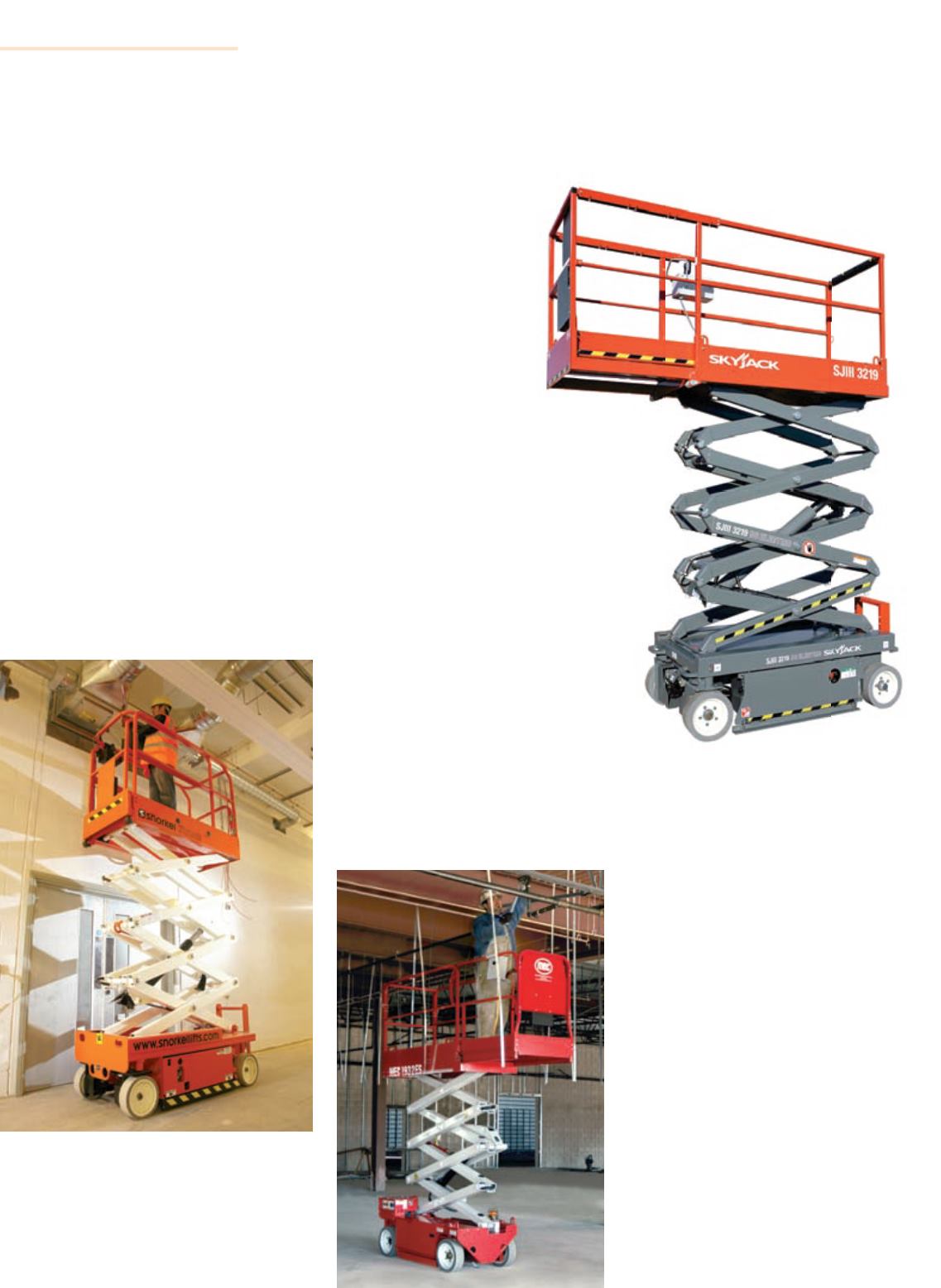
54
ACCESS, LIFT & HANDLERS
NOVEMBER-DECEMBER 2013
LOW-LEVEL ACCESS
T
here’s nothing magical about the number
19, yet there’s a misconception that
general contracting projects like framing,
painting and installing HVAC, electrical systems
or drywall require a 19-foot scissor lift. But there
is more to choosing the best lift for your job than
just how high it can go.
Although low-level scissor lifts come in just
around that 19-foot height, they go above and
beyond their size in terms of capabilities. The
only thing these lifts are typically missing is
the number 19. However, if an operator were
to take a closer look at the specs and features
of low-level access lifts, he or she will find that
their labels don’t do them justice. Low-level
lifts are designed to increase safety, efficiency,
ease of use and convenience, all while having
the ability to complete 90 percent of the jobs
contractors typically reserve for 19-foot lifts. An
added benefit is that, because of their size and
maneuverability, low-level lifts can be the first
piece of equipment onsite and the last to leave.
Give me space
One of the key factors to consider when
evaluating a lift beyond just height is working
space. Having ample space in which to work
and carry tools is critical to a operator's
efficiency and safety. Whether hanging drywall
or installing HVAC, extra space and capacity
allows for an extra person, as well as easy
access to all the materials needed to efficiently
accomplish the task. The result is
elimination of the need for multiple
trips up and down.
Nineteen-foot and higher lifts typically offer an
average capacity of 500 pounds and many low-
level lifts have two-person occupancy but also
can hold more weight – up to 750 pounds on
some models. The results are fewer trips up and
down and less time to get the job done.
Platform sizes on low-level lifts range from
25-30 inches wide by 60-70 inches long. For
even more room, extensions add up to 36
inches of platform length.
Stepping up
A scissor lift that can handle the weight and
capacity of two workers plus all the tools
certainly is a productivity benefit; finding a
feature that also provides easy access for
those workers and their materials not only can
enhance productivity, but safety as well. The
potential for increased safety and productivity
makes entry height a critical aspect to consider.
Entry heights on some scissors can be as high
as 42 inches, which can make getting onto the
lift a challenge. Even without a major accident,
the repetitive motion on and off the lift while
carrying heavy materials can cause repetitive
strain injuries (RSIs) in the knees or back.
Some lifts feature a small ladder, which can
make entry easier or increase the danger even
more because it makes accessing the platform
challenging.
Some low-level scissor lifts under 19 feet
are designed to cater to the contractor and
maintenance markets with entry heights as low
as 20 inches or only one step, which makes
getting on and off the platform easier and safer.
Users get even easier access with full swing
gates on some makes and models. They can
step onto the platform with tools and materials
in hand instead of ducking under and moving
materials up and over bars or chains, which can
lead to neck and back strain.
Taking a load off
Getting jobs done quickly and without causing
inadvertent damage is key to meeting time
constraints and staying on top of the bottom
line. The last thing a contractor wants to do is
spend time and money on repairs that easily
could have been prevented.
Heavier lifts have higher concentrated wheel
loads that can damage delicate flooring like
tile, mezzanine floors and raised floors. Also,
MEC Aerial Work Platforms
manufactures this 1932ES scissor lift.
A Skyjack SJIII 3219 scissor.
Snorkel’s S1930E scissor, pictured
here, falls into the popular 20-foot-
and-under sector.
There is more to
low-level access lifts
than meets the eye.
ALH
reports
The magic


